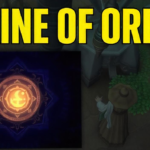Literary analysis is a process of analyzing a piece of literature in order to comprehend its meaning, motifs, and the use of stylistic devices. It demands from readers to read between the lines and find meanings that are not only hidden but actually concealed.
In the following guide, we’ll walk through a sample of literary analysis, discussing what to do, what to focus on, and how to write a thoughtful analysis that will, with any luck, rank well on the search engine and engage the reader.
What is Literary Analysis?
At its core, literary analysis is a careful, thoughtful examination of a text. It’s about breaking down literature—be it a novel, poem, short story, or play—to understand what the author is saying and how they convey their message. Readers analyze themes, characters, motifs, symbolism, and other literary elements to uncover deeper meanings and interpretations.
Step-by-Step Guide to Literary Analysis
1. Choose a Text to Analyze
Before beginning any analysis, the first step is selecting a text. In this example, we will analyze William Shakespeare’s Macbeth, specifically Act 1, Scene 3, where Macbeth encounters the witches. This scene is rich in themes such as ambition, fate, and supernatural intervention, making it an excellent choice for literary analysis.
2. Read the Text Closely
Close reading is fundamental to any literary analysis. It involves carefully reading the text multiple times, paying attention to details like word choice, tone, imagery, and structure. Each time you read, you may notice different aspects of the text that contribute to its overall meaning.
In Macbeth, Act 1, Scene 3, the witches make prophecies that plant the seeds of ambition in Macbeth. They tell him he will become Thane of Cawdor and eventually king. As a reader, ask yourself why Shakespeare introduces these supernatural figures and how their words influence Macbeth.
3. Identify Themes and Literary Elements
Once you’ve thoroughly read the text, start identifying its key themes and literary devices. In Macbeth, several themes emerge:
- Ambition: Macbeth’s ambition is sparked by the witches’ prophecy.
- Fate vs. Free Will: The question arises whether Macbeth is driven by destiny or his own choices.
- Supernatural: The witches represent supernatural forces that influence Macbeth’s life.
Shakespeare also uses various literary devices such as imagery (e.g., the witches’ eerie descriptions), foreshadowing (e.g., their prophecy), and symbolism (e.g., the crown representing power).
4. Craft a Thesis Statement
A strong thesis statement is essential for any literary analysis. It should convey your interpretation of the text, focusing on how the author uses literary elements to express themes or messages.
For our analysis of Macbeth, an example thesis statement might be:
“In Act 1, Scene 3 of Macbeth, Shakespeare uses the witches’ prophecy to explore the destructive power of unchecked ambition and raise questions about fate versus free will, suggesting that Macbeth’s downfall is a product of both supernatural forces and his own choices.”
5. Analyze Key Passages
Now that you have a thesis, the next step is to support it by analyzing key passages from the text. Each piece of evidence should tie back to your main argument and help demonstrate your interpretation.
Example Passage Analysis:
In Act 1, Scene 3, the witches greet Macbeth with: “All hail, Macbeth! Hail to thee, Thane of Glamis! / All hail, Macbeth! Hail to thee, Thane of Cawdor! / All hail, Macbeth, that shalt be king hereafter!”
This passage is critical to understanding how ambition takes root in Macbeth. Shakespeare uses repetition (“All hail”) to emphasize the witches’ influence. Their words seem to speak with authority, embedding the idea of kingship in Macbeth’s mind. The prophecy plants the idea that his rise to power is inevitable, setting the stage for Macbeth’s later actions.
Additionally, the phrase “shalt be king hereafter” introduces the theme of fate versus free will. The witches speak as though Macbeth’s future is preordained, yet the text leaves room for interpretation—whether Macbeth’s destiny is fixed or shaped by his choices.
6. Examine Characters and Their Development
Character analysis is another crucial aspect of literary analysis. How characters grow or change throughout a text can reveal much about the underlying themes.
In Macbeth, the title character undergoes significant development. At the beginning of the play, he is a noble warrior, loyal to King Duncan. However, after hearing the witches’ prophecy, Macbeth transforms into a figure driven by ambition, willing to murder to achieve his goals. His moral descent exemplifies how ambition can corrupt, aligning with the play’s central theme.
Character Analysis Example:
At first, Macbeth is reluctant to act on the witches’ words, stating, “If chance will have me king, why, chance may crown me, / Without my stir.” This indicates that he is torn between fate and action. However, as the play progresses, his inner conflict gives way to a ruthless determination, highlighted in his famous soliloquy in Act 1, Scene 7, where he contemplates killing Duncan.
7. Explore Symbolism and Motifs
Symbolism and motifs are recurring elements in literature that enhance meaning. In Macbeth, one of the most prominent symbols is blood. It represents guilt and the physical manifestation of the violence that accompanies Macbeth’s rise to power.
Symbolism Example:
After murdering Duncan, Macbeth states, “Will all great Neptune’s ocean wash this blood / Clean from my hand?” The blood symbolizes Macbeth’s guilt, which cannot be easily erased. The motif of blood reappears throughout the play, serving as a constant reminder of the moral consequences of Macbeth’s ambition.
8. Interpret the Author’s Intentions
Part of literary analysis involves considering why the author made certain choices. In Macbeth, why did Shakespeare choose to include witches and supernatural elements? What does this tell us about the societal beliefs of the time?
In Shakespeare’s era, there was widespread belief in witchcraft, and the inclusion of the witches may reflect contemporary anxieties about the influence of supernatural forces. Additionally, the witches could be seen as metaphors for the unpredictable and uncontrollable nature of ambition. Shakespeare may be suggesting that ambition, like the witches, is a dangerous force that can lead people astray.
9. Conclusion: Bringing It All Together
A strong literary analysis conclusion should recap the key points made in the essay, restate the thesis in light of the evidence presented, and offer final thoughts or insights.
Conclusion Example:
In Act 1, Scene 3 of Macbeth, Shakespeare masterfully uses the witches’ prophecy to explore the complex interplay between ambition, fate, and free will. The witches’ words act as a catalyst for Macbeth’s transformation, setting him on a destructive path that leads to his downfall. Through Macbeth’s character arc and the recurring motifs of blood and the supernatural, Shakespeare reveals the inherent dangers of unchecked ambition and raises profound questions about the extent to which our actions are governed by fate or personal choice.
Conclusion
Literary analysis is both an art and a science, requiring readers to carefully dissect a text and uncover the layers of meaning embedded within. In this example, we examined Macbeth through the lens of ambition, fate, and the supernatural, illustrating how Shakespeare uses these elements to craft a timeless tragedy. By following the step-by-step process outlined here, you can write a thoughtful, well-structured literary analysis that resonates with readers and ranks highly on search engines.









